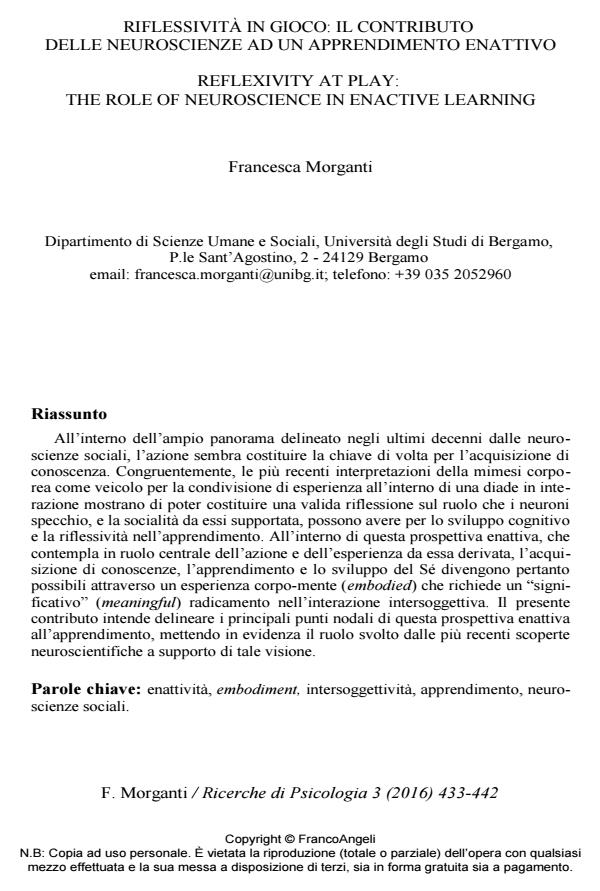Reflexivity at play: the role of neuroscience in enactive learning
Journal title RICERCHE DI PSICOLOGIA
Author/s Francesca Morganti
Publishing Year 2016 Issue 2016/3
Language Italian Pages 10 P. 433-442 File size 185 KB
DOI 10.3280/RIP2016-003012
DOI is like a bar code for intellectual property: to have more infomation
click here
Below, you can see the article first page
If you want to buy this article in PDF format, you can do it, following the instructions to buy download credits

FrancoAngeli is member of Publishers International Linking Association, Inc (PILA), a not-for-profit association which run the CrossRef service enabling links to and from online scholarly content.
Within the wide landscape defined over the past decades by social neuroscience, the action seems to be the key concept for knowledge acquisition. Consistently, the most recent interpretations of body mimicry as a vehicle for the sharing of experiences within a dyad in interaction appears to constitute a valid reflection on the role that mirror neurons, and the intersubjectivity supported by them, may have for the cognitive development and reflexivity in learning. Within this enactive perspective, that contemplates the central role of action and the experience derived therefrom, the knowledge acquisition, the learning and the Self-development become possible through an embodied experience and requires a meaningful grounding in the intersubjective interactions. The present contribution aims in outlining the main points on which and enactive perspective to learning is grounded, highlighting the role played by the latest neuroscientific findings to support this approach.
Keywords: Enactivity, embodiement, intersubjectivity, learning, social neurosciences
Francesca Morganti, Riflessivita in gioco: il contributo delle neuroscienze ad un apprendimento enattivo in "RICERCHE DI PSICOLOGIA " 3/2016, pp 433-442, DOI: 10.3280/RIP2016-003012